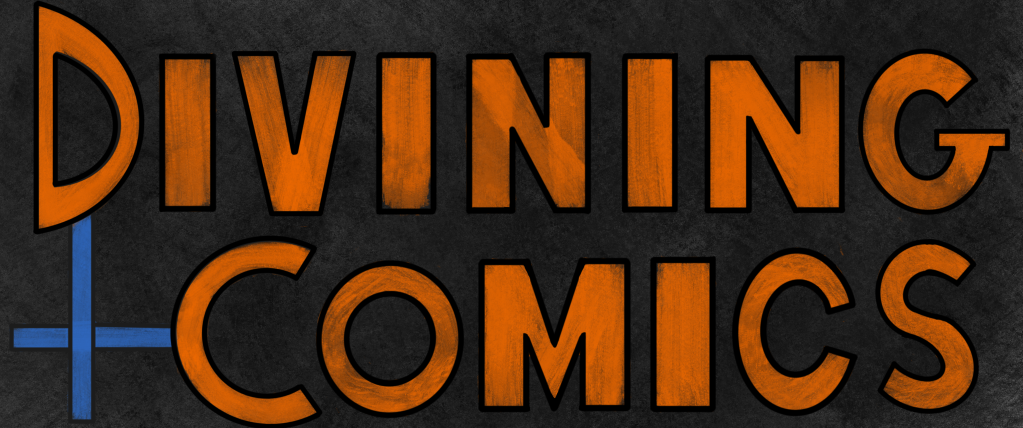Kaya # 1 and Left to Right Motion
Literacy is a magic spell we place on our brains. The squiggles that you are reading currently have no inherent meaning. Humans imbue these arbitrary symbols with the power to represent something greater. The facility for oral language seems to be a part of human nature, but we have to learn how to read. This learning process may affect the way our brains interpret other, non-written media.
For example, take this study from the University of Cleveland State about the association between movement and positivity/negativity in film.1 They find that there is a strong association with left-to-right movement and words like Good, Interesting, and Strong, whereas right-to-left movement correlates to Bad, Boring, and Weak. One explanatory speculation offered is that in the majority of Western languages, words are read from the left to the page to the right of the page. Western comic books are usually crafted in the same manner. However, clever comics can use those associations with clever intent. They will draw your eyes directionally across the page in order to play on the same associations found in that study.
Kaya # 1 demonstrates this principle magnificently. Drawn and written by Wes Craig with colors by Jason Wordie and lettering by Andworld Design, Kaya tells the post-apocalyptic story of a sister trying to take her half-brother Jin to safety after their village was devastated. From the very first page, Kaya and Jin journey from the left side of the page to right. Even the birds point with their bodies towards the leads. This draws the reader’s eye along the page, as I have depicted with blue arrows below. Even without the dialog, it is clear that they have been on a long journey.
Notice also that this is what is referred to in comics as a “double page spread”. Our protagonists aren’t even on the left page at all. This works in two ways. First, it implies they have already been journeying. It implies the left-to-right path that the reader’s eyes follow. Second, the Cleveland State study shows that even stationary characters on the right side of the screen are interpreted more positively. These are our heroes, and though they haven’t done anything spectacular yet, the art subliminally plants positive associations in the reader’s mind.

I could draw similar arrows across almost every page of the issue. That would be a simple enough lesson. But, at a few key moments, the art actually draws the eye right-to-left. This accomplishes the inverse of above, letting the reader know that something is wrong. Progress has been halted and reversed. The first example of this comes before Kaya and Jin enter the abandoned town to scavenge. For the purposes of this demonstration, the “why” of this scene doesn’t matter, so I removed the dialog.
In row 2, Kaya starts to turn around, interrupting the left to right action without stopping it entirely. She finishes this in row 3, strongly taking things right to left, before flipping it again in the bottom row. I’ve diagrammed the motion below. The third row clearly fights against the normal left-to-right reading pattern. It forces a reader to slow down, perhaps even reread the panel. This is an important moment. It also demonstrates Kaya’s narrative strength. She, as the protagonist determines which way the action flows.

There’s plenty more directional action during the big set piece fight scene. In the top panel, the motion flows right-to-left, indicating two things. First, it shows the strength of the lizard’s position. The reader’s eye almost has to swim upstream, against the flow of the panel. Second, it creates a tension to be released. Kaya has pulled back her arm, a wind-up for a punch to come. The way her arm has been semi-obscured most of the issue adds to the buildup of this panel. It pays off immediately, with a whole panel of Kaya’s punch returning the action to left to right. This motion is continued in the next panel, carrying the momentum by flying the lizard she punched into the air. Finally, the motion is subverted by a slight right to left net, capturing Kaya. Even though a comic can only show static moments, unlike a film that can depict motion,2 the beats of the fight remain clear and coherent.

The final example of right to left motion expresses yet another significant emotional beat, the low point of the issue for Jin. He is so hungry he trades his only inheritance, the scrolls of his family demonstrating his royal ancestry, for some food. The food is thrown right-to-left, and he chases after it right to left. In the narrative, Jin is at his weakest here. By contrast, his lizard taunter is in control. He, in a left to right motion, tosses the scrolls, so meaningful to Jin, into the fire. At this point, almost nothing could be worse from Jin’s perspective. However, like in many narratives, character change happens following low moments like this. Jin can grow from a self-centered prince into a caring younger brother. The start of that journey happens here, emphasized by the right to left motion.

Next time you are reading a comic, particularly one with a lot of action, pay attention to the flow of the motion. A good artist is aware, consciously or intuitively, of how a reader’s eyes move across the page. They’ll control the ride for you, so hop in and enjoy. Paying attention to how the art is subtly manipulating your eyes and brain will aid your journey in Divining Comics.
- Egizii, Matthew & Denny, James & Neuendorf, Kimberly & Skalski, Paul & Campbell, Rachel. (2012). Which Way Did He Go? Directionality of Film Character and Camera Movement and Subsequent Spectator Interpretation. ↩︎
- Ironically, films depict motion through frames that repeat so quickly our brains interpret them as motion. Film is a series of static images shown in sequence. In other words, even movies are comics. ↩︎


Leave a comment